7 Meanings of Fishery
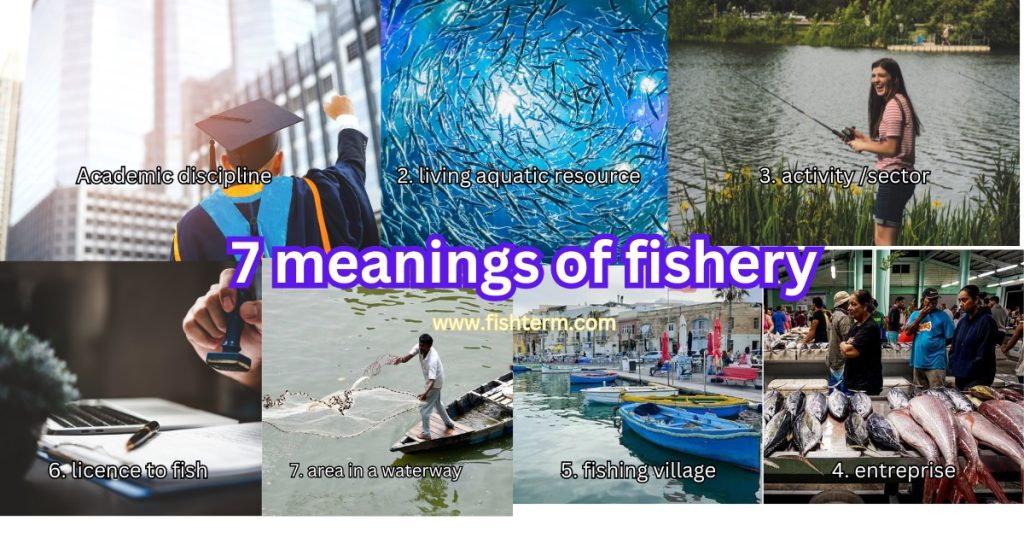
Foreknowledge
This post focuses on the international meanings of the term ‘fishery’, a spelling variant of ‘fisheries’. For clear differences between fishery and fisheries visit this post: Differences between Fishery and Fisheries.
Today, ‘fishery’ is used interchangeably with ‘fisheries’ when referring to the sector, by most prominent authors in the field, like the FAO. In this brief, we are going to be using the singular form, fishery, for consistency, simplicity, and better understanding. We will only use fisheries when referring to the plural of the same concept. For more details on their origins, read this post on the origin of both terms.
Nowadays, the term ‘fishery’ can mean an activity, a place, aquatic organisms, a licence, an enterprise, or even a discipline. Both fishery and fisheries do mean the same when talking of the activity and are often used interchangeably by many renowned organisations such as the FAO, COMHAFAT, some regional fisheries commissions, venerated authors, etc. to mean the activity. Regarding choosing between fishery to fisheries or vice versa, consult your audience’s international fisheries commission.
Case study: ambiguity of the word ‘fishery’ used in 7 Contexts
Except you are a keen reader and expert in fisheries, you may find it difficult to understand exactly what a writer is trying to say especially when they use the term ‘fishery’ repeatedly in a single sentence or paragraph without clearly bringing out the context.
Case study: Let us consider the excerpt below:
‘I hold a fishery1 and I was taught how to access, evaluate and manage a fishery 2. As a young graduate, I intend investing in fishery3, by cooperating with a nearby fishery4 around our district’s fishery5. Since I do not own a fishery4 yet, I will apply to the government for a fishery6 to creat and operate my new company while visiting the Niger river’s major fishery7 in the meanwhile. ‘
Now! The above excerpt can be very complex for non-experts but it is not grammatically wrong though – just very polysemous. I am going to explain what the writer meant in this ambiguous excerpt. The term was used to refer to 7 completely different concepts of the term “fishery”, denoted by the superscript notation in each usage context. Extracting the contexts leads us to 7 contexts/meanings. These 7 meanings/concepts of fishery (or fisheries) as used in the excerpt above are:
- Academic discipline;
- The aquatic organisms in the water;
- Activity/sector;
- A company or fish industry;
- A place, often in the district or outskirts dedicated to fishery activities
- A licence to operate in the fishery sector;
- An area in a waterway (stream, river, etc.) has fishery resources (aquatic organisms).
Now, let us examine these meanings in detail in the following section.
The 7 Meanings of Fishery with Examples (summary)
- ‘Fishery’ may mean an academic discipline that studies the culture, capture, processing or processing of edible living aquatic resources. Example: Mike is currently undergoing a Master of Science programme in fisheries, at the University of Cambridge.
- ‘Fishery’ may mean the aquatic organisms in a water body at a particular time. Example: A group of specialists are assessing river Niger’s fishery for potential endangered species;
- ‘Fishery’ may mean the industry/activity/sector, usually classified as a branch of agriculture. Example: The nation’s economy has witnessed an increase in the number of foreigners willing to invest in fishery.
- ‘Fishery’ may mean a fish company, corporation or enterprise operating in the sector. Example: The businessman owns FISHTECH Ltd., and has been running the registered bass fishery in the nation of Cameroon for decades.
- ‘Fishery’ may mean a place or village, often in the district or outskirts dedicated to fishery activities. Example: ‘FEMA approves $1.8 million for repairs to the fishing villages in Guayama, Maunabo, Mayagüez and San Juan’.
- ‘Fishery’ may mean a licence to operate in the fishery sector. Example: The government, in 2024, issued fishery to some 4056 artisanal fishermen across the nation.
- ‘Fishery’ may mean a reputable fish-rich area in a waterbody (stream, river, etc.) having fishery resources (aquatic organisms), developed and where fishery activities are known to be taking place. Example:
The 7 Meanings of Fishery (explained with graphics and excerpts in detail)
1. Fishery: academic discipline

This is the academic discipline that studies the culture, harvest, and processing of edible living aquatic resources like finfish, shellfish, aquatic molluscs, etc. It is often referred to as fisheries science in most universities. Undertaking a bachelor’s or master’s programme in this discipline will often earn you a bachelor’s of science or master’s of science in fisheries. Studying the technical aspects of fishery in most higher institutions will lead to the issue of an engineering degree like a Bachelor’s or Master’s of Engineering in Fishery Science.
For universities offering fisheries programmes, visit:
Higher institutions offering fisheries studies in the world
2. Fishery: a group of living aquatic resources
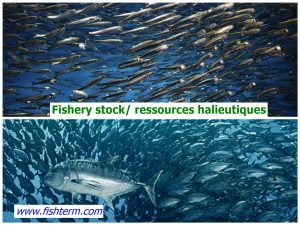
This refers to the sum of all the edible living aquatic resources in their various species located in a water body at a given time. This stock is usually assessed during fishery management. We easily come across collocations like the river’s fishery, the lake’s fishery, fishery stock, fishery resources, etc.
Usage example 2: Excerpt showing a usage example of fishery in the context of fish stock:
Excerpt 1:
… The United Nations Fish Stocks Agreement (in force since 2001) should be used as the legal basis for management measures of the high seas fisheries… (FAO’s THE STATE OF WORLD FISHERIES AND AQUACULTURE 2020, page 54)
———————————————————————————————-
Excerpt 2:
… FAO facilitated negotiation of the Code to be consistent with existing instruments and, in a non-mandatory manner, establish principles and standards applicable to the conservation, management and development of all fisheries… (FAO’s THE STATE OF WORLD FISHERIES AND AQUACULTURE 2020, page 93)
Excerpt 3:
‘The main fisheries within Area 21 are: Atlantic cod, pollock, hake, Atlantic red fishes, Atlantic herring, Atlantic menhadin, Atlantic mackerel, plaice, halibut, haddock, crabs, lobsters, northern prawn, pink shrimps, American sea scallop, ocean quahog, clams and squids.’
Source: Marashi, S.H. Summary Information on the Role of International Fishery and Other Bodies with Regard to the Conservation and Management of Living Resources of the High Seas. FAO Fisheries Circular. No. 908, Rome, FAO. 1996. 104p.
3. Fishery: activity/sector/field
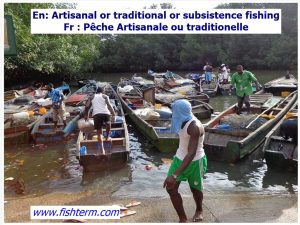
This is a field or sector, often classified under agriculture that deals with the culture, harvest, and or processing of edible living aquatic resources. This sector may be governed by a state ministry or ministerial department in charge of fisheries activities. This sector encompasses stakeholders like fishers, aquaculturists, fishmongers, etc, and varies according to region. In Cameroon for instance, the country’s fishery sector is governed by its Ministry of Livestock, fisheries and animal industries (MINEPIA). In the UK, the fishery sector is governed by the Ministry of Agriculture, Fisheries and Food (MAFF).
The fisheries sector may be further broken down into capture fishery and culture fisheries; freshwater and marine fishery; and extensive, semi-industrial, and industrial fishery sectors.
Usage example 3: excerpt showing a usage example of fisheries in the context of a sector:
‘Asia continues to grow in terms of employment in the sector, albeit at a more measured pace with its large absolute number of people employed in the primary sector of aquaculture and fisheries.’ (Source: FAO’s THE STATE OF WORLD FISHERIES AND AQUACULTURE 2020, page 39)
4. Fishery: a company or fish industry
Another meaning of Fishery is an enterprise or business that farms, catches, processes, or sells fish or fishery products.
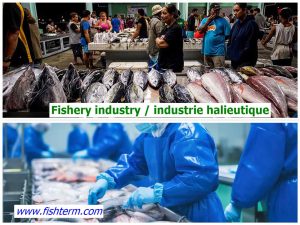
Usage example 4: excerpt showing a usage example of fishery in the context of a company:
Globally, the proportion of women in the total work force in aquaculture (19 percent) is larger than that in fisheries (12 percent) (Figure 14). Overall, women play a crucial role throughout the fish value chain, providing labour in both commercial and artisanal fisheries. (FAO’s THE STATE OF WORLD FISHERIES AND AQUACULTURE 2020, page 39)
… The most common conflicts reported within the coastal area regard fishing gear conflicts and conflicts between coastal and industrial fisheries. (FAO’s THE STATE OF WORLD FISHERIES AND AQUACULTURE 2020, page 97)
5. Fishery: place dedicated to fishery activities
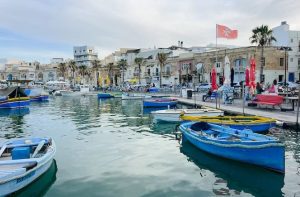
Most governments take into consideration fisheries activities in their regional development and planning policies. During town planning, some areas are earmarked for agriculture and industries. This is the case of industrial zones in towns, which are located on the outskirts of the town. When an area has been earmarked for fisheries activities, it is referred to as a fishery. Most towns already have fisheries (fishing grounds) where fishery activities could be practised. It may be called a fishing ground.
A fishing village or town is a village or town, usually located near a fishing ground, with an economy based on catching fish and harvesting seafood. Some of these villages include:
- Amed, in Indonesia
- Bethsaida, in Israel
- Akwidaa, in Ghana
- Chibu, in Japan
- Huanchaco, in Peru
- Kakapir, in Pakistan
- Marsaxlokk, in Malta, etc.
This is a list of fishing villages across the world.
6. Fishery: licence to operate in the fishery sector

A fishery licence, also known as a fishery permit is an authorisation issued to fisheries stakeholders as an administrative or legal mechanism employed by local governments to regulate fishery activities.
Read more on licences.
7. Fishery: An area in a waterbody rich in living aquatic resources
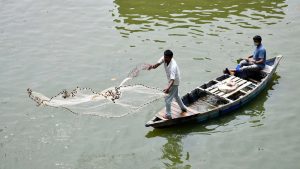
Resources don’t usually evenly distribute themselves along a natural waterway. They are often noticed, for some reason, to have accumulated in specific regions along the waterway. These resource-rich areas are known as fisheries. Fisheries are usually marked by heavy catches, far above other areas in the waterbody.
For example, major fisheries (FISHING AREAS) in the Atlantic Ocean and adjacent seas are: Northwest Atlantic (Area 21); Northeast Atlantic (Area 27); Western Central Atlantic (Area 31); Eastern Central Atlantic (Area 34); Mediterranean and Black Sea (Area 37); Southwest Atlantic (Area 41); Southeast Atlantic (Area 47).
Leave a Reply